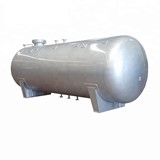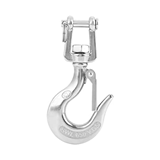Simultaneously, any technology to help companies achieve this goal must deliver value fast– or they will never get out of the starting gate.
A recent IDC Manufacturing Insights report found a dichotomy between lowering operational costs and driving innovation. When asked about the business priorities that drive their IT investments, 38 percent of midsized companies surveyed emphasized the importance of cost--cutting initiatives.
Yet, top--line growth strategies such as higher sales volumes and faster product and service innovation were almost equally important to survey participants (36.7 percent and 38 percent, respectively).
So how can SME’s balance the need to invest in future growth while also managing increasing cost pressures?
The answer lies in initiatives that quickly capitalise on opportunities to increase demand responsiveness and reduce costs to improve cash flow without interruption to the day--today business.
New technology, such as Cloud Computing, implemented in a non--traditional way, can help any business seize such opportunities.
The implementation of supply chain planning solutions is an obvious way to identify improvement opportunities and drive down costs, thus generating cash flow from operations.
But many companies are missing out because of their persistent reliance on outdated tools. Typically, these tools consist of Microsoft Excel spreadsheets and aging legacy systems that simply cannot match the speed and breadth of today’s supply chain complexities and cannot accurately forecast the trends and needs of the future.
This forces the business to rely solely on the speed and experience of its people. There is no denying the value of relying on an experienced team, but at some point the team becomes overburdened with tactical, routine issues, leaving little or no time for strategic business planning.
Today’s supply chain planning solutions can gather and analyse huge volumes of information from across the supply chain in real time. This enables companies to quickly identify potential opportunities and automatically adjust the supply chain plans to deliver high service levels and uninterrupted cash flow.
By offering forward--looking capabilities, supply chain planning tools also help companies mitigate business risks by avoiding customer service failures, out--of--control inventory building and operational breakdowns.
When determining whether or not to implement supply chain planning technology, Australian businesses should consider the following critical strategies for increasing their return on investment:
1. Focus on the Most Critical Issues First
Often, companies realise the biggest impact by simply making a small set of targeted improvements to their most significant supply chain pain points.
The specific challenges they may choose to address include inaccurate forecasts, overstocks, missed deliveries or other roadblocks in their supply chain.
Companies should also partner with their solutions provider to conduct an up--front value assessment that identifies a few critical areas for short--term improvement, as well as defines the potential returns.
2. Act Quickly Using Existing Data
Companies shouldn’t let concerns about data availability hold them back. Today’s supply chain planning solutions typically require only about 20 data points, which most businesses have at their disposal via existing spreadsheets and legacy systems. Such solutions can help these companies develop fully automated plans that will serve as the basis for making better, more informed decisions.
3. Improve Supply Chain Planning Without Burdening IT
Implementing any new technology can be risky, causing interruption to their day--today business and unnecessary use of their own IT resources by relying on the solution provider’s experts to run the software for them. Supply chain planning in the cloud, in combination with a team of knowledgeable experts and a proven implementation methodology, allows companies to focus on adopting best--in--class supply chain processes that will drive value to their businesses. Additionally, such solutions can be implemented in as little as four months, resulting in a fast return on investment.
4. Ensure That the Solution’s Functionality Can Scale
As any company grows, demand for its product changes and market conditions shift, ultimately leading to greater supply chain complexity.
To get the most from any technology investment, companies should assess the solution’s ability to scale as the business grows in volume and complexity. As improvements are made in specific areas of its operations, the company can move on to tackle new challenges – and meaningful results will begin to cascade across the entire supply chain.
Today’s supply chain planning solutions can help companies make decisions quickly and more optimally so that they can improve cash flow and establish a solid foundation for growth as economic conditions improve. By taking a speed--to--value deployment approach, companies will ensure that bottom--line benefits are achieved quickly with minimal risks to the business.







2-160x160-state_article-rel-cat.png)







